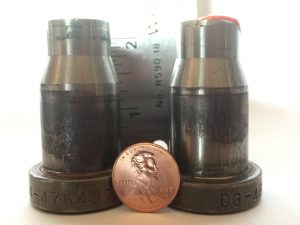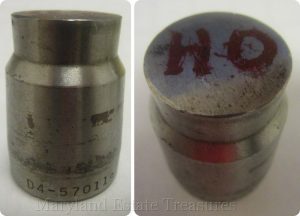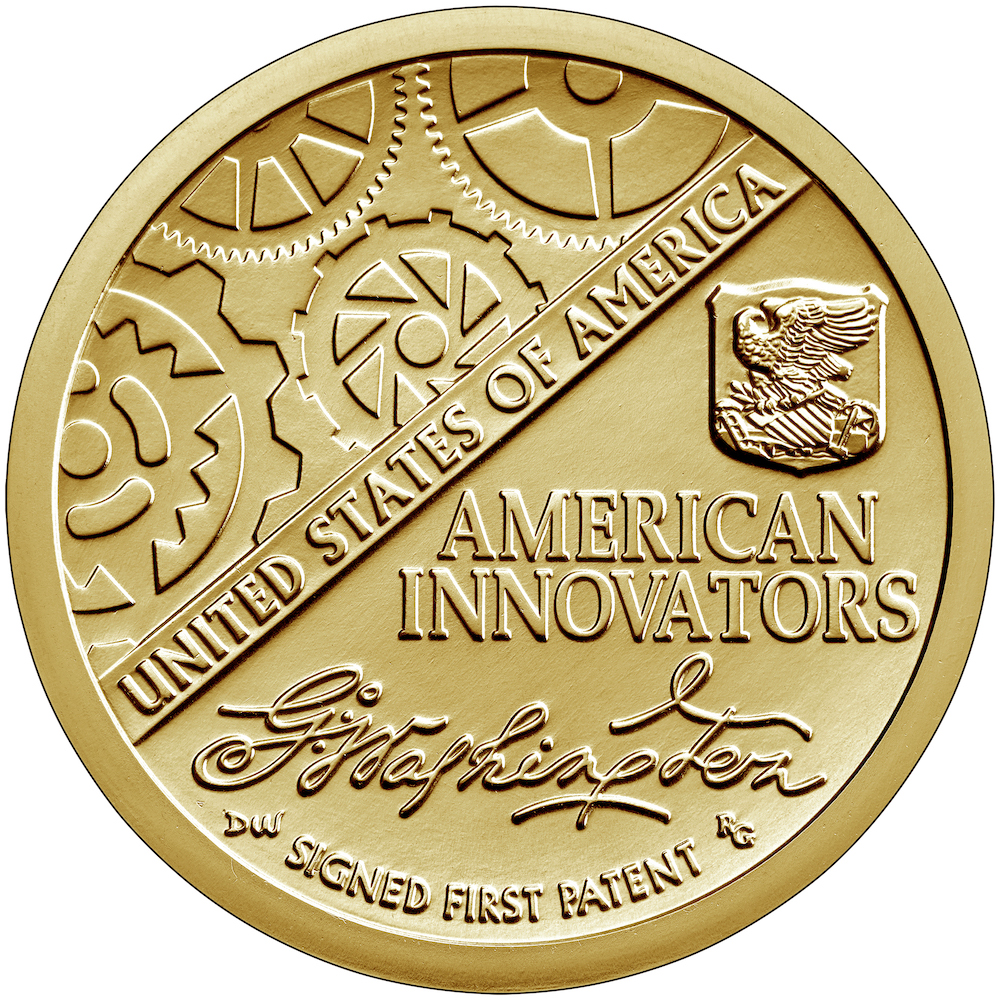Collectors Positive on Modern Coinage
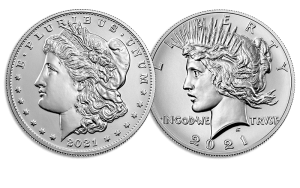 When I created the poll asking whether the U.S. Mint should continue the Morgan and Peace dollar program, I expected most people would favor the program, but I did not realize how positive some people would be.
When I created the poll asking whether the U.S. Mint should continue the Morgan and Peace dollar program, I expected most people would favor the program, but I did not realize how positive some people would be.
The email responses have ranged from people reconnecting with their parents collecting coins to the few who thought it was the biggest disaster since clad coinage.
One teacher said that she uses the quarters programs as a teaching tool. The coins allow her to talk about history using the depictions on the reverse. She has sets of Presidential and Native American dollars that are props to talk about those subjects. “They are great to introduce the kids to the 19th century presidents people don’t normally talk about,” she wrote.
Several people wrote how they plan to visit every national park or forest featured on the America the Beautiful Quarters Program reverse. Some have started their journey with the closest parks. One New England-based family has a quarters map and will insert a coin into every state after visiting a park.
One mom of Native American descent uses the Native American Dollar Coins to teach her children about their cultural history. “These coins have some of the best designs,” she wrote.
Comments about the Morgan and Peace dollar coins thought that using classic designs on modern coins gives new collectors access to those designs. “Given the rising cost of everything these days,” he wrote, “the U.S. Mint would allow more people to afford nice examples of popular gold coin designs.”
Currently, 69 of 95 voters said “Yes, I love them” to the poll. As we begin the season of giving thanks, let’s see whom else wants to weigh in.
Should the U.S. Mint Continue to Strike Morgan and Peace Dollars
Total Voters: 125
More ways to entomb your collectibles
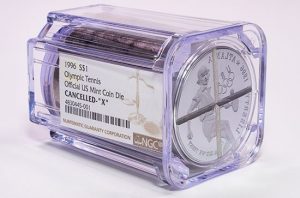
1996 Olympic Tennis Commemorative silver dollar “X” cancelled die encapsulated by NGC (Image courtesy of NGC)
Fees for this service range from $20 for a defaced die to $50 for a die that was canceled with an “X” to $100 for a die that was not canceled.
The holder appears to be similar to those used to encapsulate rolled coins. It will hold a die up to 40.6mm wide and 59.6mm tall, likely the largest die that the U.S. Mint would use to strike coins. The holder will be too small for the dies that would have struck 3-inch medals.
NGC does not say how the holders would keep smaller dies in place.
NGC will accept coin dies from any country.
Since I found coin dies interesting, I bought a few. Two Lincoln cent dies were ground down except still have a small part of the design visible. The other is a 1994 half-dollar obverse die. The one cent dies are on my desk at home and the half-dollar dollar dies is in my office.
- Lincoln Cent Dies from the Denver Mint
- Canceled obverse die from a 1994-D Kennedy Half Dollar
Having the die sitting on my desk is a great conversation starter. Visitors will ask what it is and when I explain they have the same reaction that I had when I bought it at the 2018 World’s Fair of Money: “ooo, neat!”
I am not sure how I feel about this news for the industry but I will not be submitting my dies for encapsulation. I do not think the die’s industrial look would look good entombed in plastic.
Can we just get along
 Since U.S. Mint announced the launch of the American Innovation $1 Coin Program there has been nothing but complaints from the community about the coin.
Since U.S. Mint announced the launch of the American Innovation $1 Coin Program there has been nothing but complaints from the community about the coin.
According to the law (Public Law No: 115-97), “The common design on the obverse of each coin issued under this subsection shall contain a likeness of the Statue of Liberty extending to the rim of the coin and large enough to provide a dramatic representation of Liberty.” With the U.S. Mint under a short deadline because of when the bill became law (July 20, 2018), there were a number of disagreements with the Citizens Coinage Advisory Committee regarding the obverse design of the coin. The U.S. Mint tried to modify an old design but the CCAC did not like that. Eventually, the design from Miss Liberty’s left side was used.
It has turned out to be an elegant design that does not duplicate any previous one. She stands on the coin as stately as she stands in New York Harbor, extending from rim to rim as required by law. For once, the CCAC and I agree on a good design.
But that is not enough for some people. The design is too plain.
The reason why the coin appears plain is that two elements that could have been on the obverse, the date and motto “E Pluribus Unum,” are on the edge of the coin.
Edge lettering for the $1 coins began in 2007 with the introduction of the Presidential $1 Program. It was decided to move these elements, along with “In God We Trust” to the edge because the obverse was to include the years of the president’s term. Aside from providing more space for the design, relocating the date would prevent potential confusion as to the date of the coin.
“In God We Trust” was restored to the obverse of the coin in 2009 after striking errors caused the edge of the coin to be blank. This caused overzealous conspiracy theorists and the gullible believing that this was done purposely against the religious communities.
Some argue that since the conditions have changed, the coin should not have edge lettering.
Aesthetically, the obverse design was well executed. It would be how the statue would look if you were standing in Battery Park located at the southern tip of Manhattan, and looked across the water on a clear day. There should be no reason to change the design.
However, there is a problem with the edge lettering in that it makes it difficult to see. As someone who has reached the age where an annual eye exam is a requirement and “corrective lenses” is now a permanent fixture on my driver’s license, having the mintmark on the edge requires me to use magnification to find the mintmark.
As a member of the Baby Boomer generation whose glasses seem to get stronger every year, I would be in favor of moving the date and mintmark to the obverse of the coin. But if the problem is only aesthetics, then I have no problems with having to use a 16x loupe to help identify where the coin was struck.
Weekly World Numismatic News for December 16, 2018

Patent X1 issued to Samuel Hopkins and signed by President George Washington on July 31, 1790 (USPTO Image)
On July 31, 1790, Samuel Hopkins was granted patent number X00001 for this method “in the making of Pot ash and Pearl ash by a new Apparatus and Process.” In June of this year, the U.S. Patent and Trademark Office (USPTO) issued Patent #10,000,000 based on the current numbering system that began in 1836. According to the USPTO, there were 9,433 patents issued from 1790 through 1835.
The other news from the U.S. Mint was the first strike ceremony for the Apollo 11 50th Anniversary Commemorative Coins at the Philadelphia Mint. Children of the three astronauts who flew on Apollo 11 represented their fathers at the ceremony: Mark Armstrong, Andrew Aldrin, and Ann (Collins) Starr.
Coins will be offered for sale to the public on January 24, 2019. The money raised from this commemorative coin program will benefit the Astronauts Memorial Foundation, the Astronaut Scholarship Foundation and the Smithsonian National Air and Space Museum’s “Destination Moon” gallery.

A pair of 5-ounce silver proof $1 coins struck during the First Strike Ceremony at the U.S. Mint (photo courtesy of collectSPACE.com)
And now the news…
Cash use has plummeted in Australia over the last few years but Eric Eigner isn't worried. "People will want to collect something that appears to be more scarce," he says. "I think it's a good thing to a certain extent."  → Read more at smh.com.au
→ Read more at smh.com.au
The patterns on Guangxi commemorative coins reveal special cultural elements and how the region has developed in the past 60 years.  → Read more at news.cgtn.com
→ Read more at news.cgtn.com
Museum intern Roo Weed ’18.5, a physics major, is using digital solutions to make the College’s rare coin collection more accessible to the public.  → Read more at middlebury.edu
→ Read more at middlebury.edu
"> <META PROPERTY=  → Read more at miningnewsnorth.com
→ Read more at miningnewsnorth.com
From Alexander the Great to the Byzantium and the Middle Ages until the modern era all periods are covered in an exhibition featuring a rare collection of gold coins. This collection contains coins that are considered to have paved the way for the use of coins in world history and is being staged by the …  → Read more at cyprus-mail.com
→ Read more at cyprus-mail.com
The United States Mint reveals a new coin collection to commemorate the 50th anniversary of the Apollo 11 moon landing. Item includes great video of striking coins in the mint  → Read more at myhighplains.com
→ Read more at myhighplains.com
The U.S. Mint has struck its initial coins commemorating the 50th anniversary of the first moon landing. You could say it was one small strike for the Mint, one not-so-giant press for Apollo history. The coins were stamped as part of a "first strike" ceremony.  → Read more at collectspace.com
→ Read more at collectspace.com
The finds are "of great benefit" in helping understand Wales' "unique history", National Museum Wales says.  → Read more at bbc.com
→ Read more at bbc.com
An Innovative Start
Later today, the U.S. Mint will have a ceremony to begin the American Innovation $1 Coin Program. The ceremony is scheduled for 11:30 am at the U.S. Mint’s headquarters at 801 9th Street NW in Washington, D.C.
The American Innovation $1 Coin Program will issue four dollar coins a year in recognition of the significant innovation and pioneering efforts of individuals or groups from each of the 50 States, the District of Columbia, and the United States territories. Coins will be issued in the order that the states entered the union followed by the District of Columbia, Puerto Rico, Guam, American Samoa, the U.S. Virgin Islands, and the Northern Mariana Islands.
As allowed by law (Public Law 115-197), the U.S. Mint is producing an introductory coin for the program that will be presented as part of the launch.
The obverse of the coin, which will be featured throughout the series, is a view of the Statue of Liberty in profile. The view of the upper third of her body with the torch extended to the edge of the coin with a plain background gives the image a quiet elegance that is not usual for a U.S. Mint design. It was designed by Justin Kunz of the Artistic Infusion Program with credit to the Citizens Coinage Advisory Committee for pushing the U.S. Mint to come up with something different.
The reverse design of this introductory coin provides hope that the future of this program will not be mired in trite designs. It honors American Innovation by recognizing the first U.S. patent signed by President George Washington that was issued to Samuel Hopkins on July 31, 1790, for developing a process for making potash. The gears representing innovation appears next to Washington’s autograph.
The year, mint mark, and E PLURIBUS UNUM (Out of many, one) will appear on the edge of the coin as it does with all $1 coins since 2007.
Although it is a fantastic design worthy of a collection that includes the Native American Dollar designs, it will have the same impact as all dollar coins issued in the 21st century. It is a coin that will barely circulate and will not grab the attention of the U.S. public without its circulation.
Even though Congress creates these programs and has been told that this program will be a failure because the coins will not circulate alongside the paper dollar, they continue as if nothing is wrong. Even the Government Accounting Office, their own agency that helps with investigations and oversight of the federal government, has recommended eliminating the one-dollar note.
I will collect these coins as I have done for all of the special series introduced in the 21st century. But I will not be as enthusiastic about this series as I should be until something is done to make these coins circulate.
Weekly World Numismatic News for December 9, 2018
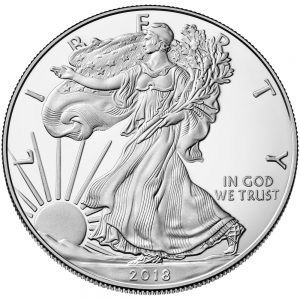 Each week I look at the news from the week in order to highlight something interesting. With the holiday season upon us, I was hoping to find something nice to write about. Instead, Kitco’s story about the increasing sales of silver and a marketplace that is now moving is more concerning than positive.
Each week I look at the news from the week in order to highlight something interesting. With the holiday season upon us, I was hoping to find something nice to write about. Instead, Kitco’s story about the increasing sales of silver and a marketplace that is now moving is more concerning than positive.
Precious metals are the investment of last resort. While some portfolios will diversify into metals for a safe haven, metals become active when there is uncertainty in the market. The trade wars between the United States and China have caused market players to reduce their risk by investing in silver.
Although most prefer gold, silver has been the metal of choice for the Chinese for hundreds of years. It has been the benchmark of their trade and the basis for their monetary system prior to all countries moving off precious metals standards. It was the basis of trade that the United States thought would be resolved by creating the Trade Dollar coin in 1873.
The rise in silver sales from the U.S. Mint is good in that it will increase seigniorage. It is not so good in that it indicates there is the potential for the markets to change course. Markets hate uncertainty and this could be their answer to the uncertainty brewing in trade between China and the United States.
And now the news…
Currencies / Fiat Currency The first gold coins appeared around 560 B.C. Over time it became a practice to store larger amounts of gold in warehouses.  → Read more at marketoracle.co.uk
→ Read more at marketoracle.co.uk
These days, you can't buy much with 5¢ – including the cost of making one. That's right, the cost of producing a 5¢ piece is about 5.059¢, and this is about the cheapest it's been in recent years. In 2015, the cost of producing a 5¢ piece hit a high of 7¢ due to the fluctuating cost of nickel and copper.  → Read more at smh.com.au
→ Read more at smh.com.au
Inmates in a Bulgarian prison were in for a shock when they stumbled across an enormous hoard of silver coins from the Ottoman Empire. The incredible haul was discovered alongside two broken treasure pots in a prison in the Bulgarian city of Pleven.  → Read more at mirror.co.uk
→ Read more at mirror.co.uk
The National Bank of Romania (BNR) has put into circulation, for numismatic purposes, a commemorative collector banknote with face value of lei 100 dedicated to the anniversary of 100 years since the Great Union on December 1, 1918.  → Read more at romania-insider.com
→ Read more at romania-insider.com
Correcton:The U.S. Mint provided incorrect information on its website Monday morning, misstating the number of ounces sold in December. In an update of its sales data the U.S.  → Read more at kitco.com
→ Read more at kitco.com
Rare gold coins and a golden earring have been discovered in the ancient Mediterranean port of Caesarea in northern Israel—possibly left and never recovered as Crusaders conquered the area 900 years ago.  → Read more at phys.org
→ Read more at phys.org
It was 150 years ago this month when one of Nevada's most treasured artifacts first arrived in Carson City.  → Read more at carsonnow.org
→ Read more at carsonnow.org
Lianna Spurrier has the tooth fairy to thank for a hobby that transformed into sudden job opportunities.  → Read more at thetrailblazeronline.net
→ Read more at thetrailblazeronline.net
This article first appeared in the Nevada Appeal on July 20, 2014. Abe Curry received papers on July 16, 1866, approving the start of construction on the Carson Mint.On  → Read more at nevadaappeal.com
→ Read more at nevadaappeal.com
